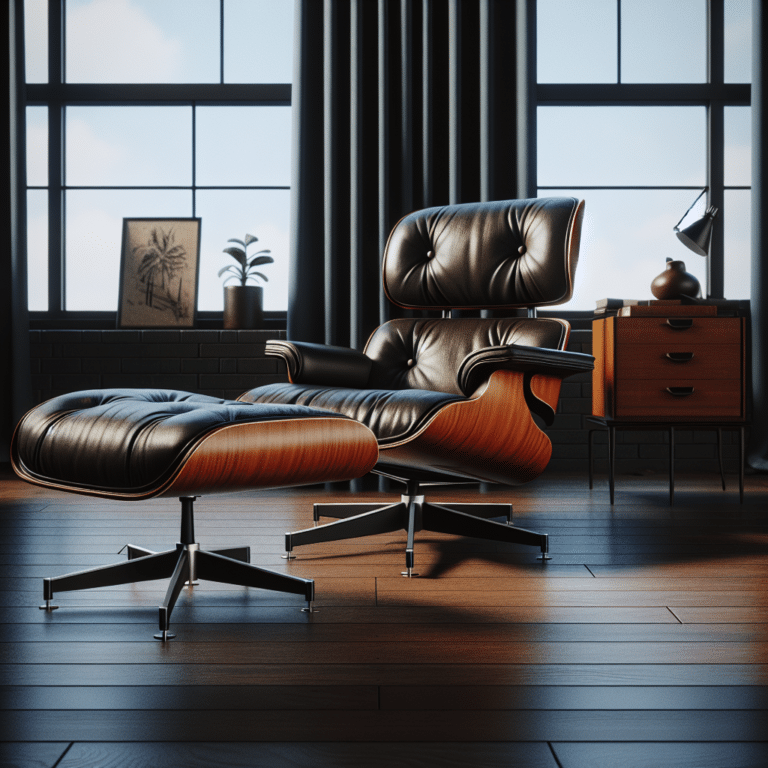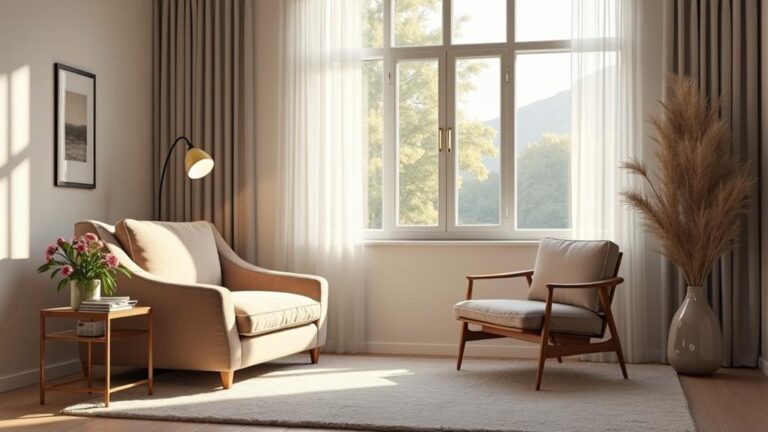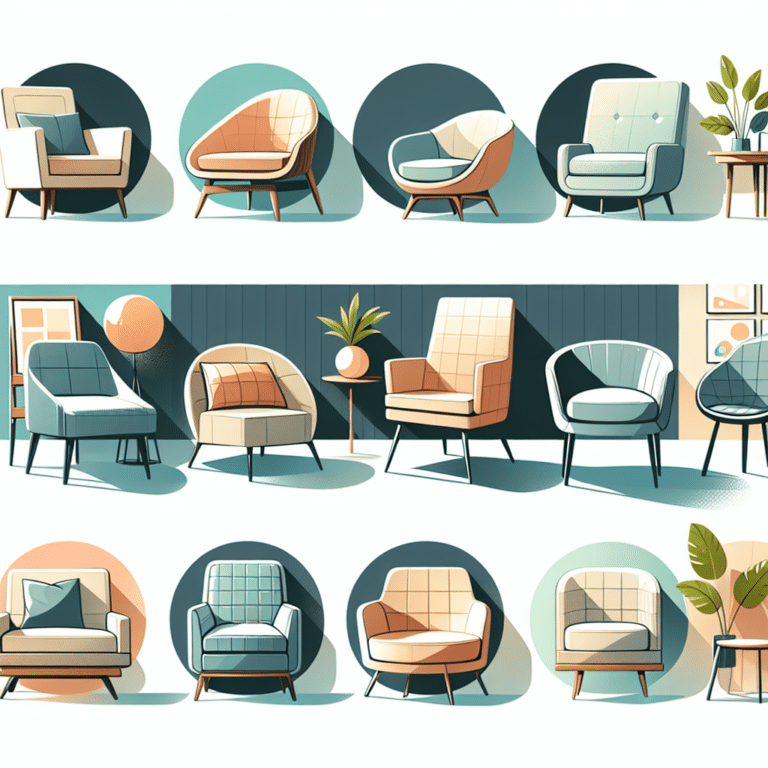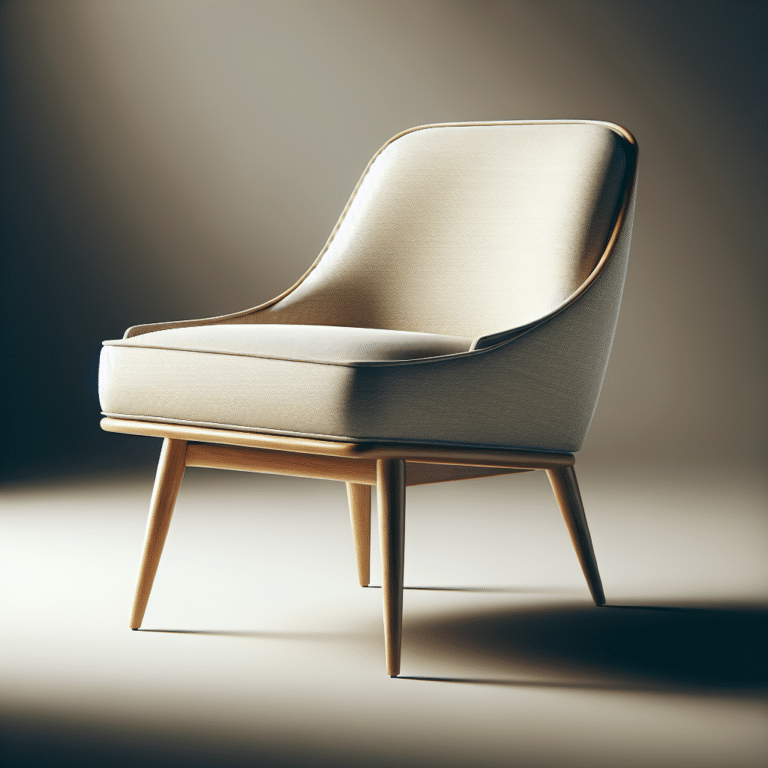The Ultimate Guide To Accent Chairs: Everything You Need To Know
Are you looking to add a touch of style and flair to your home decor? Look no further than accent chairs! In this complete guide, we will walk you through everything you need to know about accent chairs, from their versatile designs to the various ways they can enhance any space. Whether you’re a seasoned interior designer or a novice decorator, this article has got you covered. So sit back, relax, and get ready to discover the ultimate guide to accent chairs and how they can transform your living space.
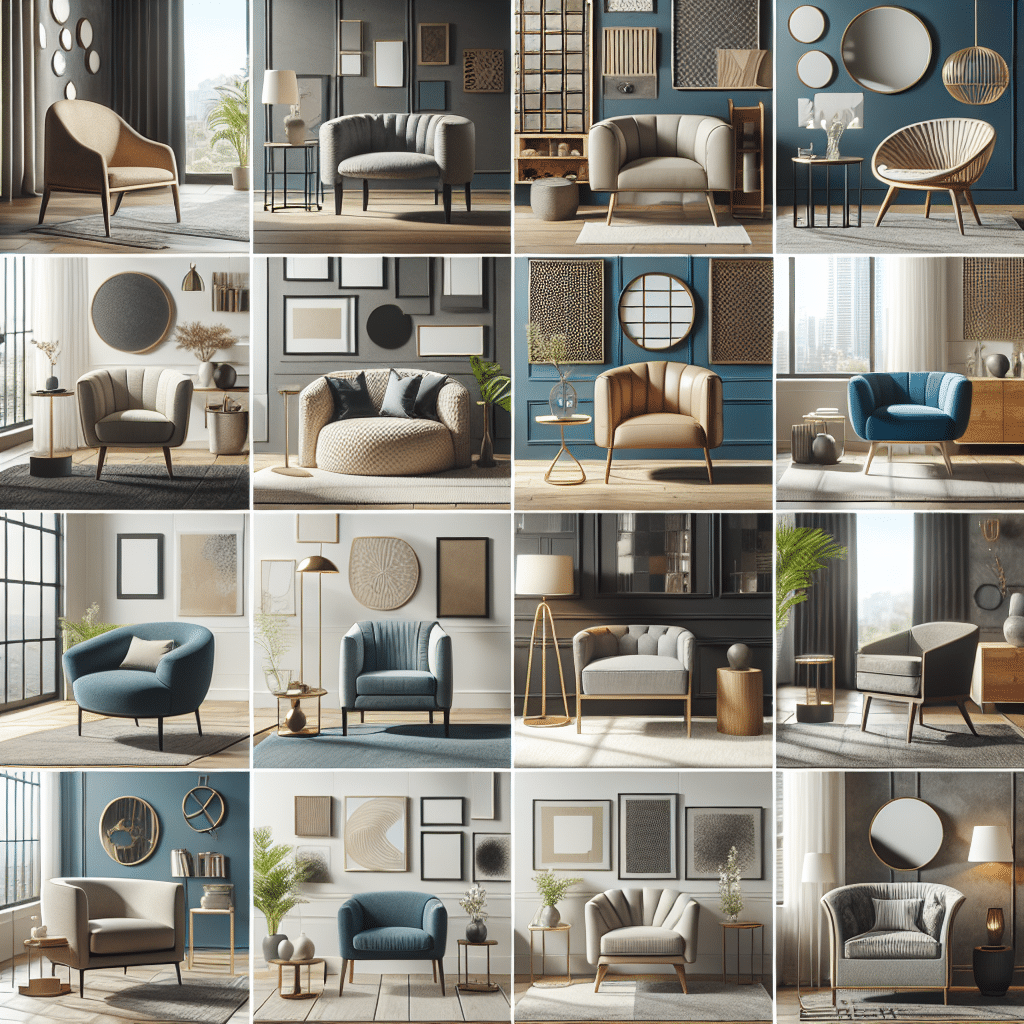
Understanding Accent Chairs
Definition of an Accent Chair
An accent chair is a piece of furniture that is designed to add a decorative touch or emphasis to a room’s decor. Unlike the main seating furniture, such as sofas or sectional sofas, accent chairs are typically smaller in scale and serve as a complement to the overall design scheme. These chairs are often placed in strategic locations within a space to create visual interest, provide additional seating, or enhance the style and ambiance of a room.
The Role of Accent Chairs in Interior Design
Accent chairs play a crucial role in interior design by adding personality and character to a room. They serve as focal points that draw attention and contribute to the overall style and aesthetics of the space. Whether it’s a bold statement chair in a vibrant color or a subtle, artistic piece that blends seamlessly with the decor, accent chairs have the power to transform the atmosphere of a room. Their versatility allows them to be incorporated into various design styles, from modern and contemporary to traditional and eclectic.
Variations in Accent Chair Styles
Accent chairs come in a wide range of styles, each with its own unique characteristics and design elements. Here are some popular variations in accent chair styles:
Types of Accent Chairs
Armchairs
Armchairs are the most common type of accent chair, characterized by their large, cushioned seats and armrests. They provide a comfortable seating option and are often used as primary seating in living rooms, bedrooms, or home offices. Armchairs can be upholstered in various fabrics, offering endless options for customization to match different design preferences.
Slipper Chairs
Slipper chairs are armless accent chairs that are lower to the ground, making them ideal for smaller spaces or rooms with lower ceilings. They have a sleek and streamlined silhouette and are known for their versatility and functionality. Slipper chairs can be used as accent seating in various rooms, such as the living room, bedroom, or even as a vanity chair in the bathroom.
Club Chairs
Club chairs are a timeless classic, known for their deep, plush seats and wide armrests. These chairs exude elegance and sophistication, making them a popular choice in formal living rooms or office spaces. Club chairs often feature leather upholstery and nailhead trim, adding a touch of luxury to any room.
Wingback Chairs
Wingback chairs are characterized by their high backs, which curve around the sides and provide a sense of enclosure and coziness. Originally designed to shield the sitter from drafts, wingback chairs have evolved into statement pieces that add a touch of elegance and luxury to any space. They are often used as accent chairs in living rooms, libraries, or bedrooms.
Barrel Chairs
Barrel chairs feature a curved back that wraps around the sitter, resembling a barrel shape. These chairs are designed to provide a comfortable and enclosed seating experience, making them perfect for relaxation or conversation. Barrel chairs are available in various materials and can be upholstered in fabric or leather, depending on the desired look and feel.
Occasional Chairs
Occasional chairs are versatile accent chairs that can be used in a variety of spaces and situations. They are often smaller in scale and can be easily moved around to accommodate different seating arrangements. Occasional chairs can come in a variety of styles, from traditional to modern, and can be customized to fit the room’s decor seamlessly.
Swivel Chairs
Swivel chairs feature a rotating base that allows the sitter to easily turn in any direction. These chairs offer both functionality and style, making them a popular choice for home offices, entertainment rooms, or reading nooks. Swivel chairs come in various designs, from sleek and modern to classic and traditional, ensuring there is a style to suit every taste.
Materials and Fabrics
Leather Accent Chairs
Leather accent chairs are known for their timeless appeal and durability. They offer a luxurious and sophisticated look that can elevate any room’s decor. Leather chairs are available in a variety of styles, from classic tufted designs to modern and sleek silhouettes. They can be a great option for those seeking a statement piece that adds a touch of elegance and refinement to their space.
Fabric Upholstered Chairs
Fabric upholstered chairs offer endless possibilities in terms of colors, patterns, and textures. They can be customized to match any design style or personal preference. Fabric chairs can range from plush and cozy to sleek and contemporary, depending on the chosen fabric and design details. They are a popular choice for those looking for versatility and comfort in their accent chairs.
Wooden Accent Chairs
Wooden accent chairs bring a natural and organic touch to any space. They can be crafted from various types of wood, such as oak, walnut, or teak, each with its own unique grain and character. Wooden chairs can be beautifully carved and finished to showcase intricate details, making them a statement piece in their own right. They can complement a variety of design styles, from rustic and farmhouse-inspired to modern and Scandinavian.
Metal Accent Chairs
Metal accent chairs offer a sleek and industrial aesthetic that can add a contemporary touch to any space. Whether made of stainless steel, iron, or aluminum, metal chairs are known for their durability and minimalist design. They can be upholstered in fabric or leather for added comfort and style, or left in their bare metal form to showcase their modern appeal.
Rattan and Wicker Accent Chairs
Rattan and wicker accent chairs bring a tropical and relaxed vibe to any room. These chairs are typically crafted from natural materials, such as rattan or bamboo, and can be woven into intricate patterns and designs. Rattan and wicker chairs are lightweight and breathable, making them perfect for sunrooms, porches, or outdoor spaces. They can be paired with cushions or throws for added comfort and style.
Selecting the Right Accent Chair
Considering the Room’s Existing Decor
When selecting an accent chair, it is crucial to consider the existing decor of the room. The chair should complement the colors, textures, and overall style of the space. If the room has a neutral color palette, a bold and vibrant accent chair can add a pop of color and visual interest. On the other hand, if the room already has a busy pattern or a vibrant color scheme, a more subdued and neutral accent chair can create balance and harmony.
Understanding Scale and Proportion
Scale and proportion are essential factors to consider when choosing an accent chair. The chair should be proportionate to the size of the room and the other furniture pieces in it. An oversized accent chair can overwhelm a small space, while a small chair may go unnoticed in a large room. It is crucial to strike the right balance and ensure that the chair fits comfortably within the available space without overpowering or getting lost.
Choosing the Appropriate Style for Your Space
The style of the accent chair should align with the overall design theme of the room. For a modern and minimalist space, sleek and streamlined chairs with clean lines and simple silhouettes can complement the aesthetic. Traditional or vintage-inspired rooms may benefit from chairs with intricate detailing and a classic design. It is important to consider the room’s style and choose an accent chair that harmonizes with the existing decor.
Balancing Comfort and Aesthetics
While aesthetics are an important consideration, comfort should not be overlooked when selecting an accent chair. Depending on the intended use and personal preferences, some chairs may prioritize comfort over style, while others may strike a balance between the two. It is essential to test the chair’s comfort level by sitting in it, considering factors such as cushioning, back support, and armrest height. A chair that is visually appealing but uncomfortable may not be practical for long-term use.
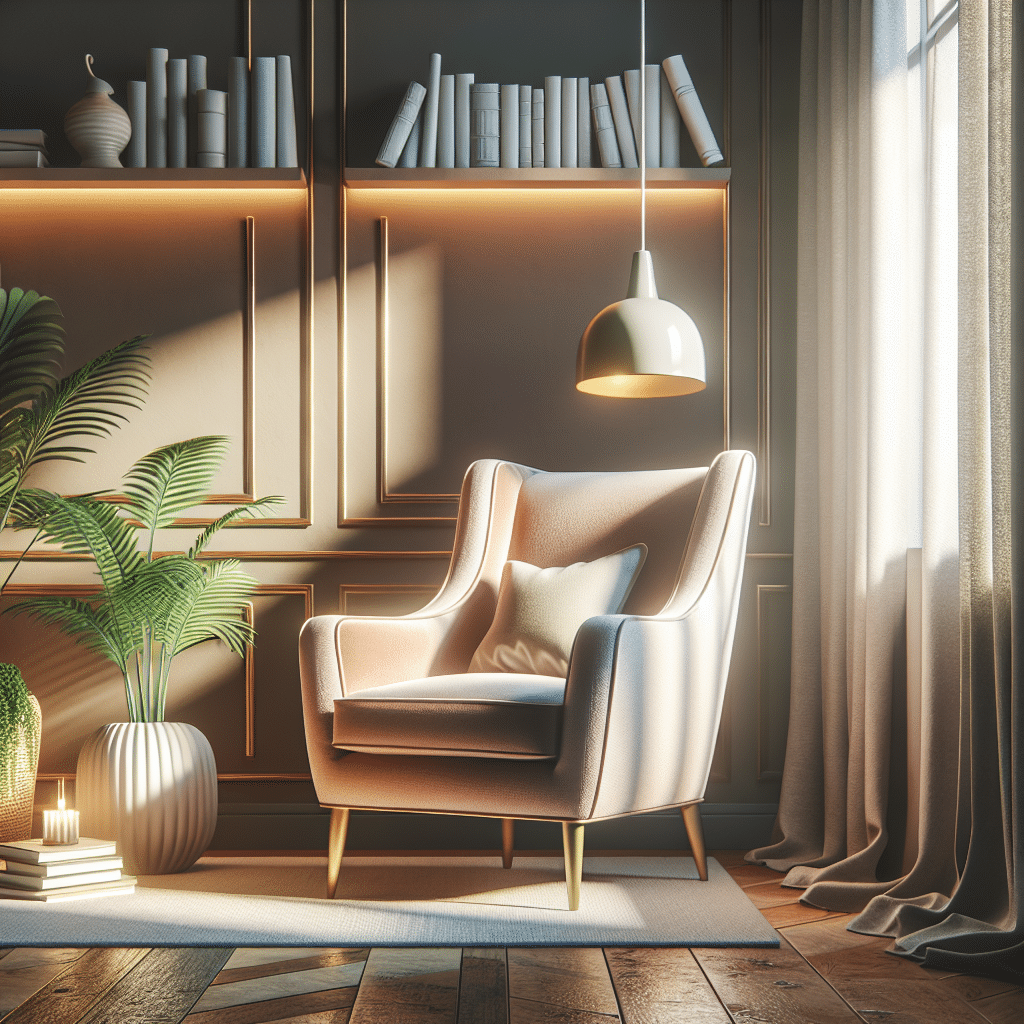
Color and Pattern Choices
Solid Colors vs. Bold Patterns
The choice between solid colors and bold patterns in accent chairs largely depends on personal preference and the desired effect in the room. Solid-colored chairs can provide a sense of elegance and sophistication, allowing other elements in the room to take center stage. They can also serve as a neutral foundation for adding pops of color through other decor items. Bold patterns, on the other hand, can make a statement and become a focal point in the room. They can infuse energy and personality into the space, creating visual interest and excitement.
Complementing vs. Contrasting with Room Decor
When it comes to color and pattern choices, accent chairs can either complement or contrast with the room’s decor. Complementary colors or patterns can create a harmonious and balanced look. For example, if the room has a dominant color scheme of blues and whites, a blue accent chair can seamlessly blend in and enhance the overall aesthetic. On the other hand, contrasting colors or patterns can create a bold and striking visual impact. A vibrant yellow accent chair in a room with mainly neutral tones can become a focal point and add a touch of vibrancy.
Using Accent Chairs to Introduce New Colors
Accent chairs can also be used as an opportunity to introduce new colors into a room’s color palette. If the room has a primarily neutral color scheme, an accent chair in a vibrant color can inject personality and excitement. Similarly, if the room’s color palette is already established, an accent chair in a complementary or contrasting color can create visual interest and break up the monotony.
The Role of Texture in Color Selection
Texture plays a crucial role in color selection for accent chairs. Different fabrics or materials can create texture and depth, adding visual interest to the overall look of the chair. For example, a velvet accent chair in a rich, deep color can create a luxurious and elegant feel. Similarly, a woven rattan chair can bring a natural and organic texture to a space. Considering the texture of the chair in relation to the room’s decor can enhance the visual appeal and tactile experience.
Comfort and Ergonomics
The Importance of Cushioning and Support
Comfort is paramount when selecting an accent chair, and cushioning and support are key factors in ensuring a comfortable seating experience. The chair should have sufficient cushioning in the seat and back to provide a plush and supportive feel. High-quality foam or down-filled cushions can offer optimal comfort, while maintaining their shape and durability over time. Adequate lumbar support is also important, especially for those who will be sitting in the chair for extended periods.
Adjustable Features and Their Benefits
Some accent chairs offer adjustable features that can enhance comfort and ergonomics. These features can include adjustable seat height, reclining mechanisms, or swivel bases. Adjustable features allow for customization and adaptability, ensuring that the chair can be tailored to individual preferences and needs. They can provide additional support and functionality, making the chair a versatile and ergonomic seating option.
The Impact of Chair Dimensions on Seating Comfort
The dimensions of the accent chair, such as seat depth, seat height, and backrest height, can greatly impact seating comfort. A chair with a shallow seat depth may not be comfortable for individuals with longer legs, as it can put pressure on the back of the thighs. Similarly, a chair with a low backrest may not provide adequate support for individuals who require more lumbar support. Considering the dimensions of the chair in relation to the user’s body type and seating preferences can ensure a comfortable and ergonomic seating experience.
Maintaining Proper Posture with Accent Chairs
Proper posture is essential for maintaining comfort and preventing strain or discomfort while sitting in an accent chair. The chair should offer adequate lumbar support, encouraging a natural curve in the lower back. The seat height should allow the feet to rest comfortably on the floor, promoting proper alignment of the spine. Additionally, armrests at the appropriate height can help support the arms and shoulders, preventing tension and fatigue. It is important to choose an accent chair that promotes good posture to avoid potential long-term health issues.

Placement and Arrangement
Accent Chair Spacing Guidelines
When placing accent chairs, it is important to consider spacing guidelines to ensure visual balance and optimal functionality. The recommended spacing between accent chairs is typically around 18-24 inches, allowing for comfortable movement and conversation. However, this spacing can vary depending on the size of the chairs and the available space. It is important to experiment with different arrangements and adjust the spacing to achieve the desired look and feel in the room.
Creating Focal Points with Accent Chairs
Accent chairs have the power to create focal points in a room, drawing attention and adding visual interest. Placing an accent chair in a prominent location, such as near a fireplace or in a corner, can create a focal point that anchors the space. By selecting a chair that stands out in terms of color, pattern, or design, it becomes a statement piece that captivates and enhances the overall ambiance of the room.
Pairing Chairs with Other Furniture
When pairing accent chairs with other furniture pieces, it is important to consider the overall style and proportions. The chairs should complement or contrast with the other furniture to create a cohesive and harmonious look. For example, pairing a traditional wingback chair with a modern sofa can create an eclectic and visually interesting mix. Similarly, matching accent chairs to other seating furniture, such as a sofa or love seat, can create a cohesive and balanced seating arrangement.
Flow and Accessibility Around Accent Chairs
The placement of accent chairs should promote a natural flow and ensure accessibility in the room. Chairs should be positioned in a way that allows for easy movement and navigation around them. It is important to consider traffic patterns and ensure that the chairs do not obstruct pathways or create obstacles. Accessibility is especially important for chairs that are frequently used, ensuring that they can be easily accessed and utilized without inconvenience.
Accessorizing Your Accent Chair
Selecting Throws and Pillows
Accessories such as throws and pillows can enhance the comfort and style of an accent chair. Throws can be draped over the back or arm of the chair to add warmth and coziness. They can also introduce additional colors, patterns, or textures to complement the chair or the room’s decor. Similarly, pillows can be added for lumbar support or purely for decorative purposes. Choosing pillows in coordinating or contrasting colors can add visual interest and create a cohesive look.
Choosing Side Tables and Ottomans
Side tables and ottomans are functional and stylish additions to accent chairs. Side tables provide a surface for placing books, drinks, or other essentials, while ottomans can serve as footrests or additional seating. When selecting side tables or ottomans, it is important to consider the scale and proportion in relation to the chair. The style and materials of the tables or ottomans can complement or contrast with the chair, depending on the desired aesthetic.
Lighting Considerations for Accent Chairs
Lighting plays a crucial role in accentuating the beauty and functionality of an accent chair. The placement of the chair should take into account the availability of natural light, as well as the need for artificial lighting. Positioning the chair near a window can provide ample natural light for reading or relaxation. Alternatively, adding a floor or table lamp near the chair can create a cozy and well-lit reading nook. Ambient lighting, such as sconces or overhead lights, can also be considered to enhance the overall ambiance of the space.
Decorative Objects and Artwork to Complement Chairs
Decorative objects and artwork can be strategically placed near accent chairs to enhance their aesthetic appeal. For example, a small sculpture or vase can be placed on a side table next to the chair to create a visually pleasing tableau. Alternatively, hanging artwork or a mirror above the chair can create a focal point and add visual interest. The choice of decorative objects and artwork should align with the overall style and theme of the room, further enhancing the impact of the accent chair.

Care and Maintenance
Cleaning Tips for Different Materials
Proper care and maintenance can ensure the longevity and beauty of accent chairs. Different materials may require specific cleaning methods and products. Leather chairs, for example, may need periodic conditioning and spot cleaning with specialized leather cleaners. Fabric chairs may be cleaned using upholstery cleaners or by following the manufacturer’s instructions. Wooden chairs may require regular dusting and occasional polishing to maintain their shine. It is important to consult the care instructions provided by the manufacturer or seek professional advice to ensure the proper cleaning and maintenance of accent chairs.
Protecting Chairs from Wear and Tear
To protect accent chairs from wear and tear, it is important to establish some preventive measures. Placing chair pads or cushions on the seat can help distribute weight and prevent excessive pressure on the fabric or upholstery. Using armrest covers or footrests can minimize contact and friction, reducing the chances of damage. Additionally, it is important to avoid placing the chair in direct sunlight or near heaters, as prolonged exposure can cause fading or deterioration of materials.
Repair and Restoration of Accent Chairs
Over time, accent chairs may require repair or restoration to address any damage or wear. Depending on the extent of the damage, repairs can range from minor fixes, such as reupholstering or replacing cushions, to more extensive restoration, such as refinishing wooden frames or repairing structural issues. Professional upholstery services or furniture repair specialists can be consulted to assess the damage and provide appropriate solutions for repair or restoration.
Seasonal Storage and Care
If accent chairs are not frequently used or during periods of prolonged absence, it may be necessary to consider seasonal storage and care. Fabric chairs should be vacuumed or cleaned before storage to remove any dirt or stains. They should be stored in a clean, dry location to prevent mold or mildew growth. Wooden chairs may benefit from waxing or polishing before storage to protect the wood and prevent drying or cracking. It is important to follow the manufacturer’s instructions or seek professional advice to ensure the proper storage and care of accent chairs during seasonal periods of non-use.
Frequently Asked Questions
Are accent chairs necessary?
While accent chairs are not a necessity in every space, they can greatly enhance the style and functionality of a room. Accent chairs offer additional seating options and serve as focal points, adding personality and character to a space. They can create a cozy reading nook, a conversation area, or simply provide an extra seat when needed. Whether or not accent chairs are necessary ultimately depends on the specific design goals, available space, and individual preferences.
Can accent chairs be recliners?
Yes, accent chairs can come in a recliner design. Recliner accent chairs offer the functionality of a typical recliner with the added style and aesthetics of an accent chair. These chairs provide the opportunity for relaxation and comfort, allowing the sitter to recline and adjust the chair to their preferred position. Recliner accent chairs can be a great option for those looking to combine style and functionality in their seating arrangement.
How do I choose an accent chair for a small space?
When choosing an accent chair for a small space, it is important to consider scale and proportion. Opt for chairs with a smaller footprint to avoid overwhelming the space. Armless or low-profile chairs, such as slipper chairs or side chairs, can be ideal for smaller spaces. Additionally, selecting chairs in lighter colors or with open bases can create a sense of openness and airiness in the room. Foldable or stackable chairs can also be considered for their flexibility and ease of storage when not in use.
Mixing and matching accent chairs: Dos and Don’ts
Mixing and matching accent chairs can create a dynamic and visually interesting seating arrangement. Here are some dos and don’ts to keep in mind:
- Do consider coordinating colors or patterns that tie the chairs together.
- Do experiment with different styles and shapes for a more eclectic look.
- Do pay attention to scale and proportion, ensuring that the chairs complement each other and the rest of the furniture in the room.
- Don’t overcrowd the space with too many different chair styles.
- Don’t overlook the importance of balance and harmony when mixing and matching chairs.
- Don’t be afraid to incorporate chairs with contrasting styles or materials for a bold and unique look.
By following these guidelines, you can create a cohesive and visually appealing seating arrangement that showcases your personal style and design preferences.
In conclusion, accent chairs are versatile and impactful pieces of furniture that can elevate the style and functionality of any room. From armchairs to slipper chairs, there is a wide range of styles to choose from. The selection of materials, colors, and patterns allows for customization and personalization. When placing accent chairs, it is important to consider the existing decor, scale, and proportion in order to create a harmonious and balanced look. Accessories, such as throws, pillows, and side tables, can further enhance the comfort and style of accent chairs. Proper care and maintenance, along with understanding the potential for repair and restoration, can ensure that these chairs remain beautiful and functional for years to come. Whether you’re looking to introduce a statement piece or create a cozy reading nook, accent chairs are a valuable addition to any home’s interior design.





